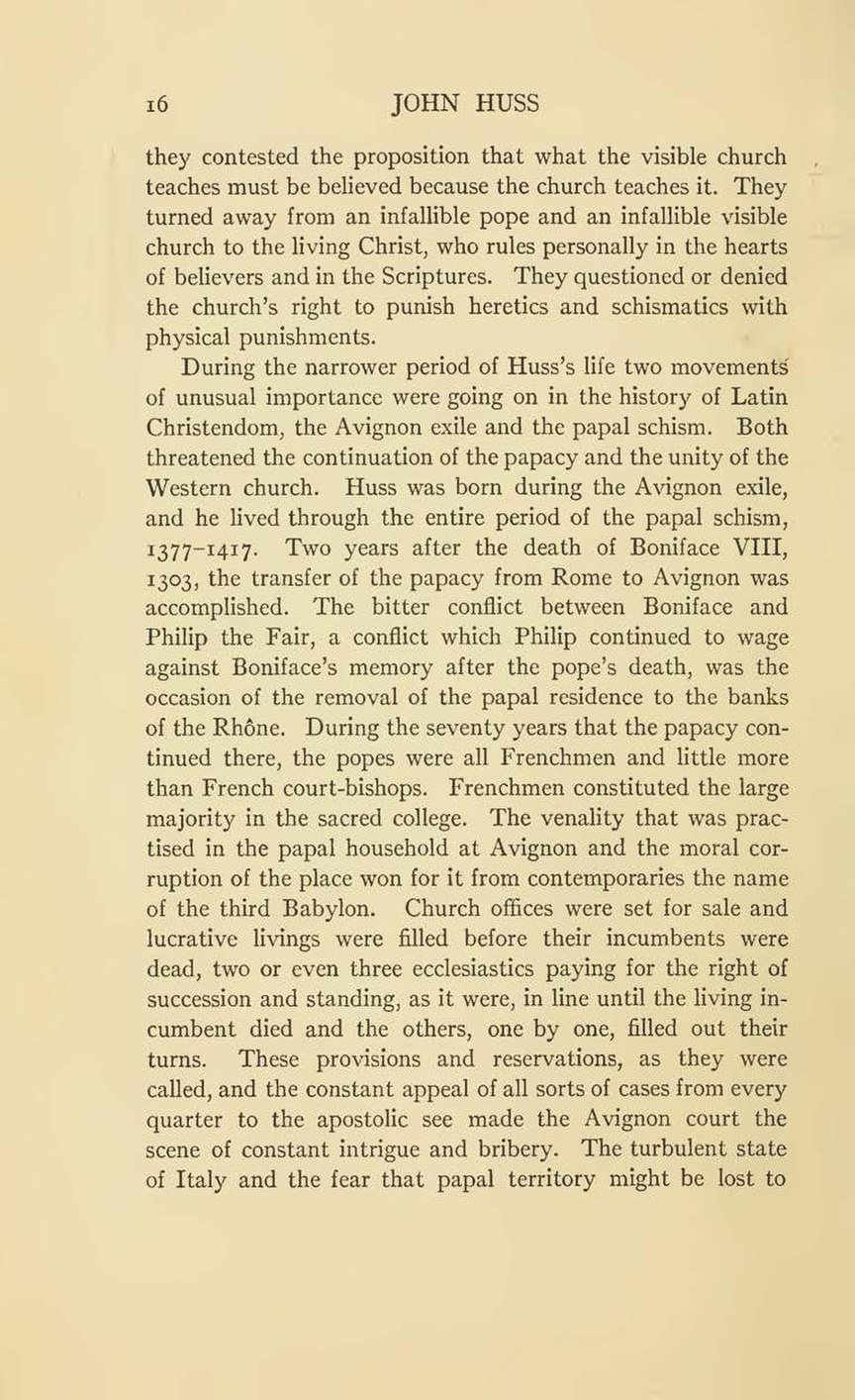they contested the proposition that what the visible church teaches must be believed because the church teaches it. They turned away from an infallible pope and an infallible visible church to the living Christ, who rules personally in the hearts of believers and in the Scriptures. They questioned or denied the church’s right to punish heretics and schismatics with physical punishments.
During the narrower period of Huss’s life two movements of unusual importance were going on in the history of Latin Christendom, the Avignon exile and the papal schism. Both threatened the continuation of the papacy and the unity of the Western church. Huss was born during the Avignon exile, and he lived through the entire period of the papal schism, 1377–1417. Two years after the death of Boniface VIII, 1303, the transfer of the papacy from Rome to Avignon was accomplished. The bitter conflict between Boniface and Philip the Fair, a conflict which Philip continued to wage against Boniface’s memory after the pope’s death, was the occasion of the removal of the papal residence to the banks of the Rhône. During the seventy years that the papacy continued there, the popes were all Frenchmen and little more than French court-bishops. Frenchmen constituted the large majority in the sacred college. The venality that was practised in the papal household at Avignon and the moral corruption of the place won for it from contemporaries the name of the third Babylon. Church offices were set for sale and lucrative livings were filled before their incumbents were dead, two or even three ecclesiastics paying for the right of succession and standing, as it were, in line until the living incumbent died and the others, one by one, filled out their turns. These provisions and reservations, as they were called, and the constant appeal of all sorts of cases from every quarter to the apostolic see made the Avignon court the scene of constant intrigue and bribery. The turbulent state of Italy and the fear that papal territory might be lost to
